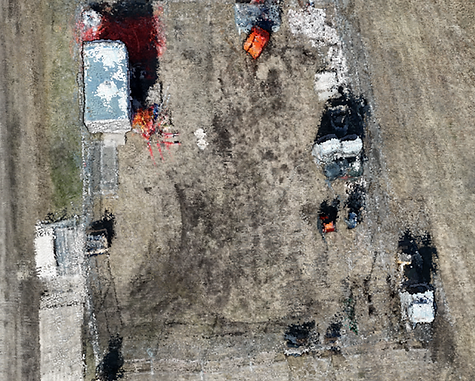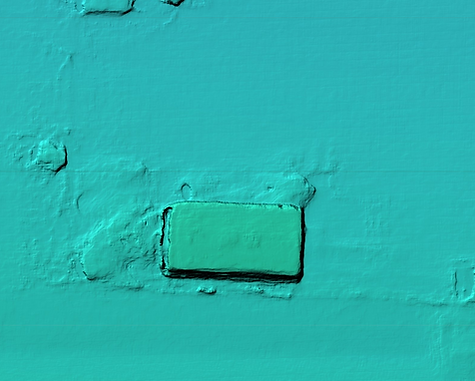

MAP Services
We are exceptional leaders in septic design and installation, using innovative technology and design practices to ensure our customers receive the highest quality systems, with generous pricing.
Drone Mapping and Photogrammetry
-How We Use It-
Photogrammetry starts with taking many overlapping photos of the target object or area; In our case, your property or system location. We can use this method to determine how much space is required for your system, the rough volume of land that will be displaced, and the calculations required for your system to operate on certain angles. with this method, we can determine where and how your system will work, all without a single shovel hitting the dirt.
Once the photos are loaded into our photogrammetry software, the system begins by detecting features or key points—unique patterns in the images that can be consistently recognized from different views; windows, corners, doors, pylons, etc.
Next, the software matches these features across multiple images. For example, it finds the same window corner or rock edge in two or more images taken from different angles.
This step creates a network of tie points—essentially, 2D coordinates in each image that correspond to the same physical point in space.
Using the matched features and triangulation, the software calculates the 3D coordinates of each tie point, and the position and orientation of the camera when each photo was taken.
This is known as Structure from Motion (SfM)—a process where both the 3D structure of the scene and the motion of the camera are estimated simultaneously.
It’s based on principles of epipolar geometry and bundle adjustment, which iteratively refines these positions for optimal accuracy. The result is a Sparse Point Cloud—a scattered 3D structure consisting of key points in space. It gives a rough skeleton of the shape.
The Sparse Point Cloud is then again refined through the comparison of other overlapping photos to create a Dense Point Cloud used to construct a 3D mesh—a network of triangles that form the surface of the object or area. This mesh fills in gaps between points and gives the object solid form.
And finally, a texture is created by projecting the original images back onto the mesh. This step gives the model realistic surface details and coloring, using high-resolution photo data.
This texture gives us extremely accurate and detailed surveys of land to ensure our systems will be installed exactly per design, and offer our customers a deeper understanding of our practices.






*Results of Photogrammetry from 100 feet above*
We can also gather height mapping data by using our Dense Point Cloud to determine the contour and depth of the ground.


We then use these files to create layouts for our system designs, gathering exact data and measurements, showing you, our customer, all the possible locations a system can fit to code on your property.


*These layouts are simply a display of potential for your understanding, and do not reflect a real field.*
Other Practices
Soil Samples
We also take soil samples from multiple test pits around your property to determine what sort of treatment your septic system will require, whether it be a mound built up off the ground to ensure that proper filtration and bacteria breakdown occurs, or if your field can be placed at ground level for satisfactory results. This ensures that no harmful bacteria make their way into your drinking water, keeping you and your people safe and clean, at all costs.
Treatment Chambers
We stand by placing small plastic chambers over all of your treatment lines, as it allows for helpful decomposers to easily make their way into the filtration layers and break down any bacteria and debris that is not safe for humans before it hits your water supply. These chambers also allow oxygen to penetrate deeper into the soil, keeping the decomposers alive and healthy, ensuring your system continues to operate at maximum efficiency.
Directional Drilling
In most cases, we are able to directional drill your lines, making sure that the land between the tank and the system remains as undisturbed as possible, while retaining the beauty of your property and speeding up the vegetation recovery times. This also significantly reduces soil sagging, which can be detrimental in more industrial scenarios, and aggravating for mowing in residential areas.
Control Panels
In larger systems, each line must receive an adequate amount of liquid to prevent over-saturation of the soil or line freezing during the winter. We use hand-crafted control panels that are personalized to each system to automatically send out the correct doses to each segment. They also come equipped with early warning systems to alert you of when your system may encounter a backup due to unflushable materials entering your tanks, line clogging, or damage to your lines from external factors - all important to prevent a system backup from happening, which can be dangerous, repulsive, and incredibly unhealthy.